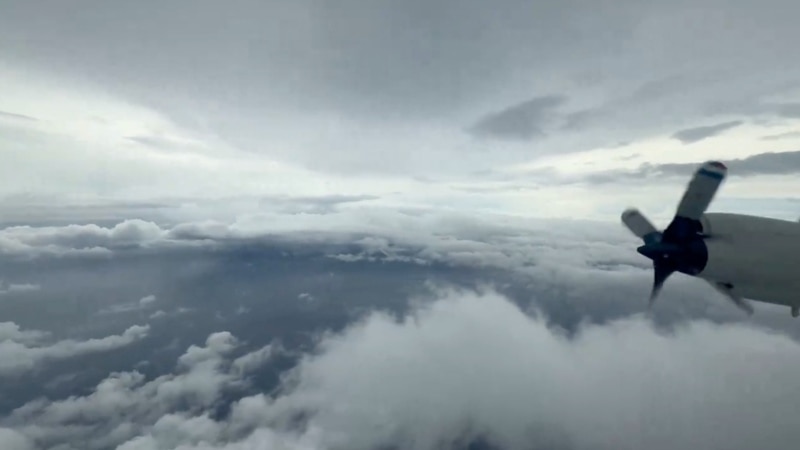Hurricane Helene drenched parts of Mexico on Wednesday on a path expected to take it to Florida with Category 3 or stronger force and storm surges that could submerge homes, issuing a chilling warning that prompted residents to flee to higher ground, suspended classes and issued state of emergency declarations across the southeastern United States.
Helene was centered about 460 miles (735 kilometers) southwest of Tampa, Florida, the U.S. National Hurricane Center said. It is expected to strengthen and grow as it moves across the Gulf of Mexico.
“I just hope and pray that everyone is safe,” said Tallahassee resident Connie Dillard, as she shopped at a supermarket that was running low on water and bread before heading to the highway to leave the city. “It’s the only thing you can do.”
The hurricane is in the 90th percentile for size and could produce a storm surge of up to 18 feet (5.5 meters) in some places, forecasters said. Its winds and rains could push far into the U.S. mainland even as it weakens after making landfall in Florida on Thursday night, officials warned.
Insurer Gallagher Re expects billions of dollars in damage claims in the United States. About 18,000 out-of-state electrical workers have arrived in Florida, ready to help restore power. Airports in St. Petersburg, Tallahassee and Tampa planned to close Thursday, and 62 hospitals, nursing homes and assisted living facilities evacuated residents Wednesday.
Helene was moving north at 12 mph (19 kph) with maximum sustained winds of 85 mph (140 kph) and was forecast to intensify over the warm waters of the Gulf of Mexico. Forecasters said it would become a Category 3 or stronger hurricane by Thursday with winds exceeding 110 mph (177 kph). Its center was forecast to hit the Florida Panhandle.
In Tallahassee, where gas stations were running low on fuel, Kameron Benjamin, a 19-year-old student at Florida A&M University, was packing sandbags with his roommate to protect their apartment before evacuating. His school and Florida State University had suspended classes.
“This hurricane is headed straight for Tallahassee, so I don’t really know what to expect,” he said.
As North Florida residents braced for Helene’s arrival, many were reminded of Hurricane Michael in 2018. That storm rapidly intensified and slammed into the coast as a Category 5 hurricane that devastated Panama City and parts of rural Florida’s panhandle.
Parts of Mexico’s Yucatan Peninsula were under hurricane warnings as Helene passed between the peninsula and the western tip of Cuba toward the Gulf of Mexico. After forming in the Caribbean Sea on Tuesday, the storm flooded streets and toppled trees as it moved near the resort town of Cancun.
In Cuba, authorities moved livestock to higher ground, and medical crews rushed to communities often cut off by storms. The government preemptively cut off power to some communities as waves up to 16 feet (5 meters) high lashed Cortez Bay. In the Cayman Islands, schools remained closed, and residents pumped water from flooded homes.
In the United States, federal authorities distributed generators, food and water, and also sent search and rescue teams and workers to restore power.
Meanwhile, Tropical Storm Isaac, the ninth named storm of the Atlantic hurricane season, formed Wednesday night. It is forecast to strengthen as it moves eastward, and possibly become a hurricane later this week, the NHC said.
In the Pacific, the system that was once Hurricane John regrouped Wednesday as a tropical storm and was strengthening as it threatened areas of Mexico’s western coast. Hurricane warnings were issued for the southwest of the country.
Connect with the Voice of America! Subscribe to our channels YouTube, WhatsApp and the newsletter. Activate notifications and follow us on Facebook, X and Instagram.















Add Comment